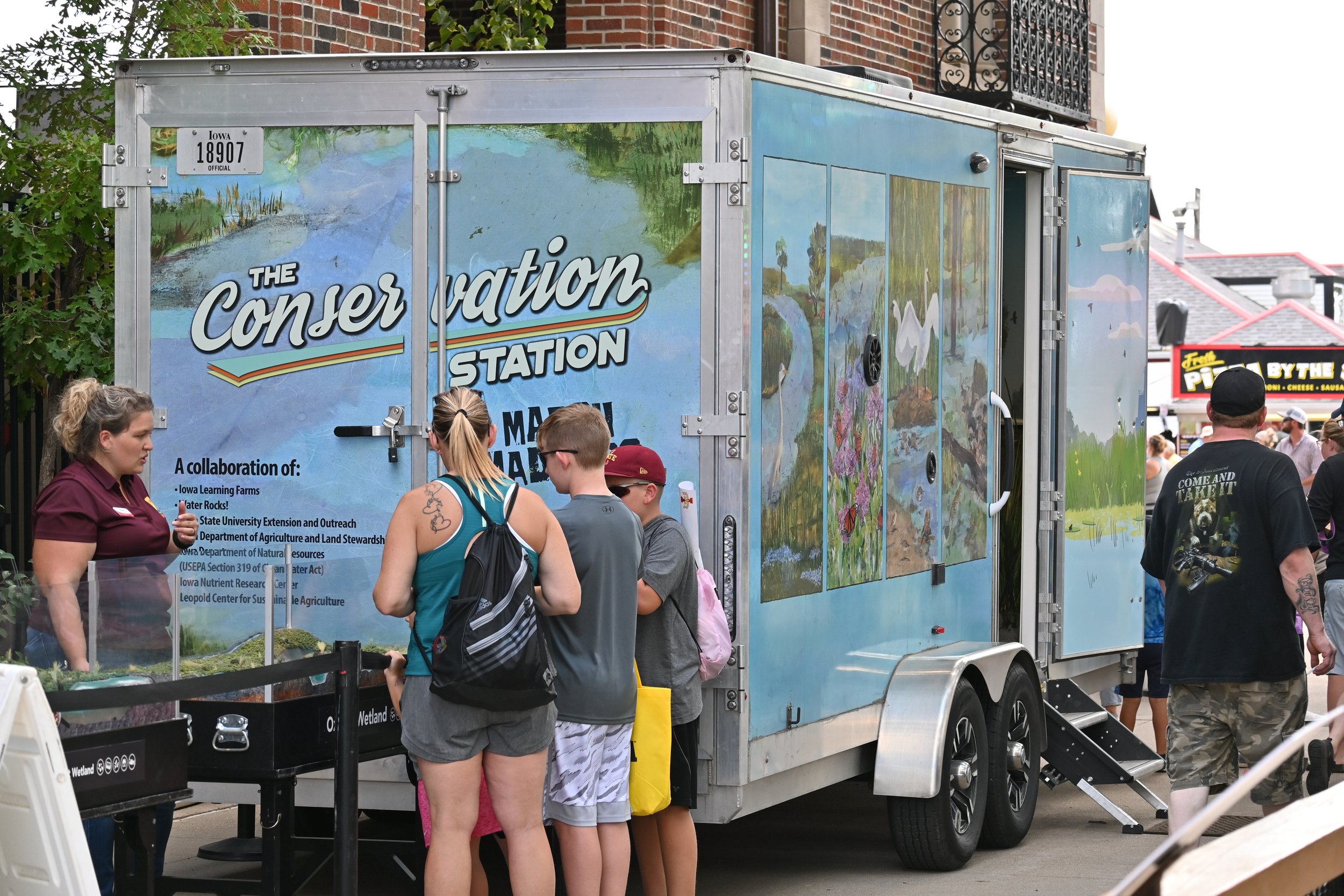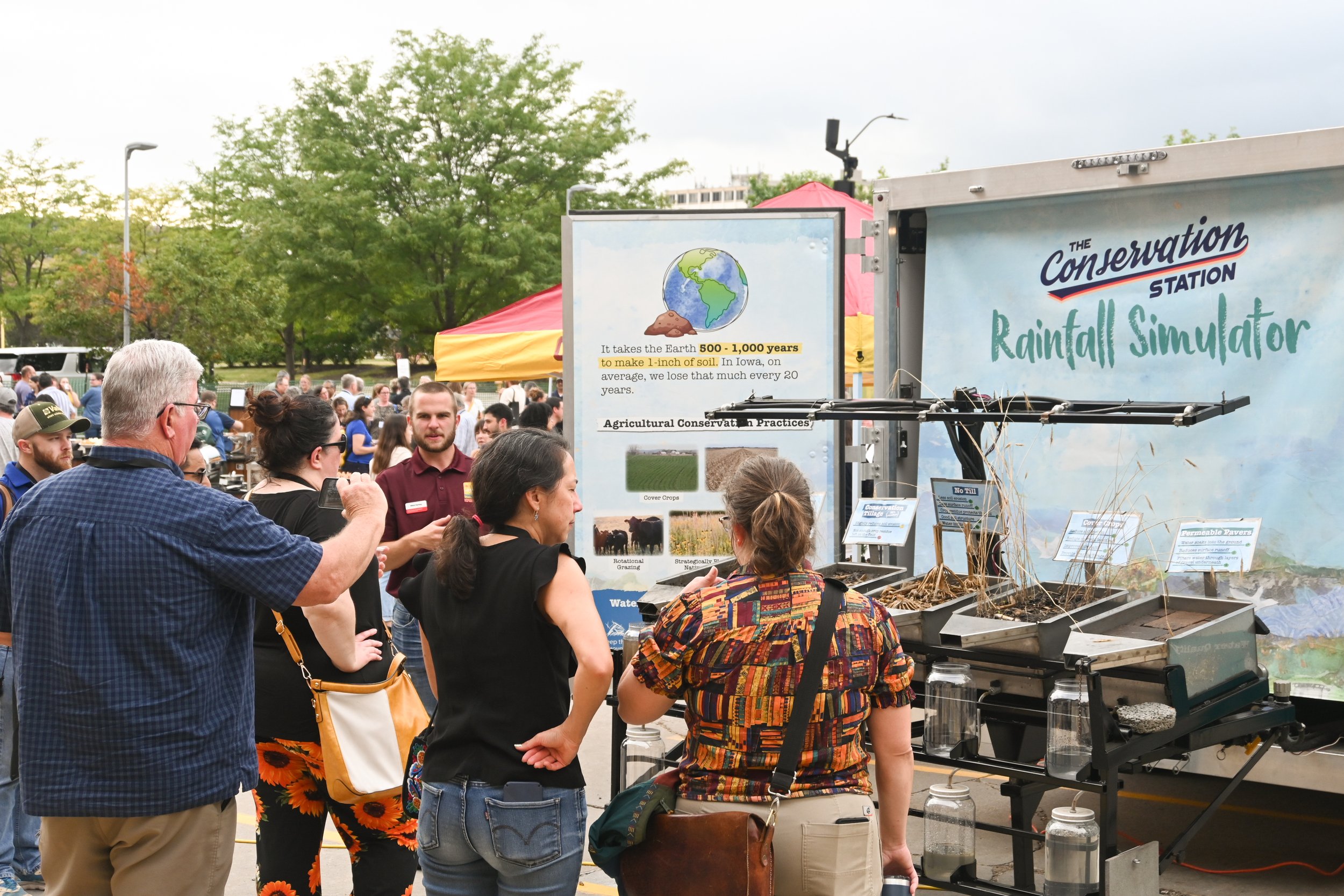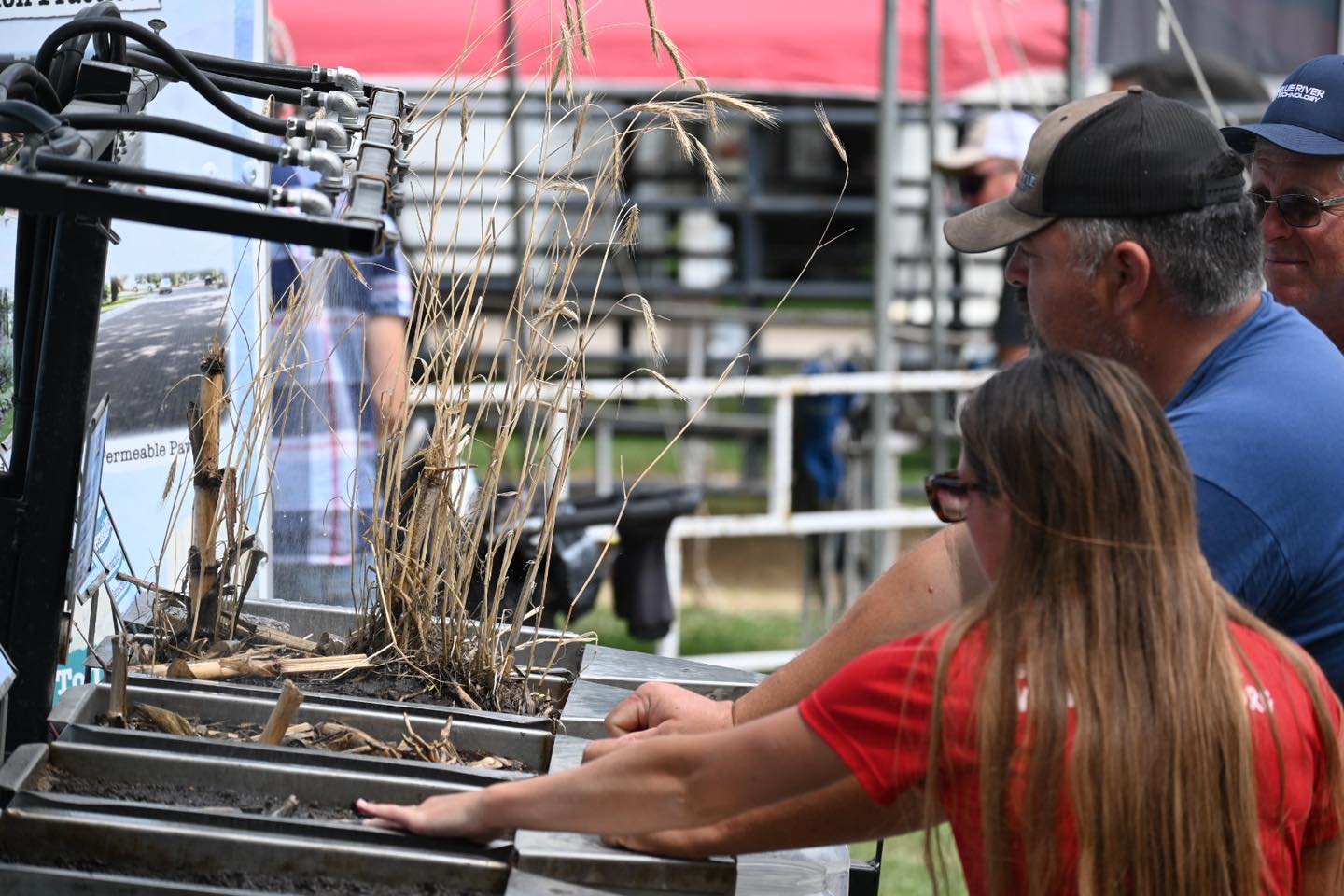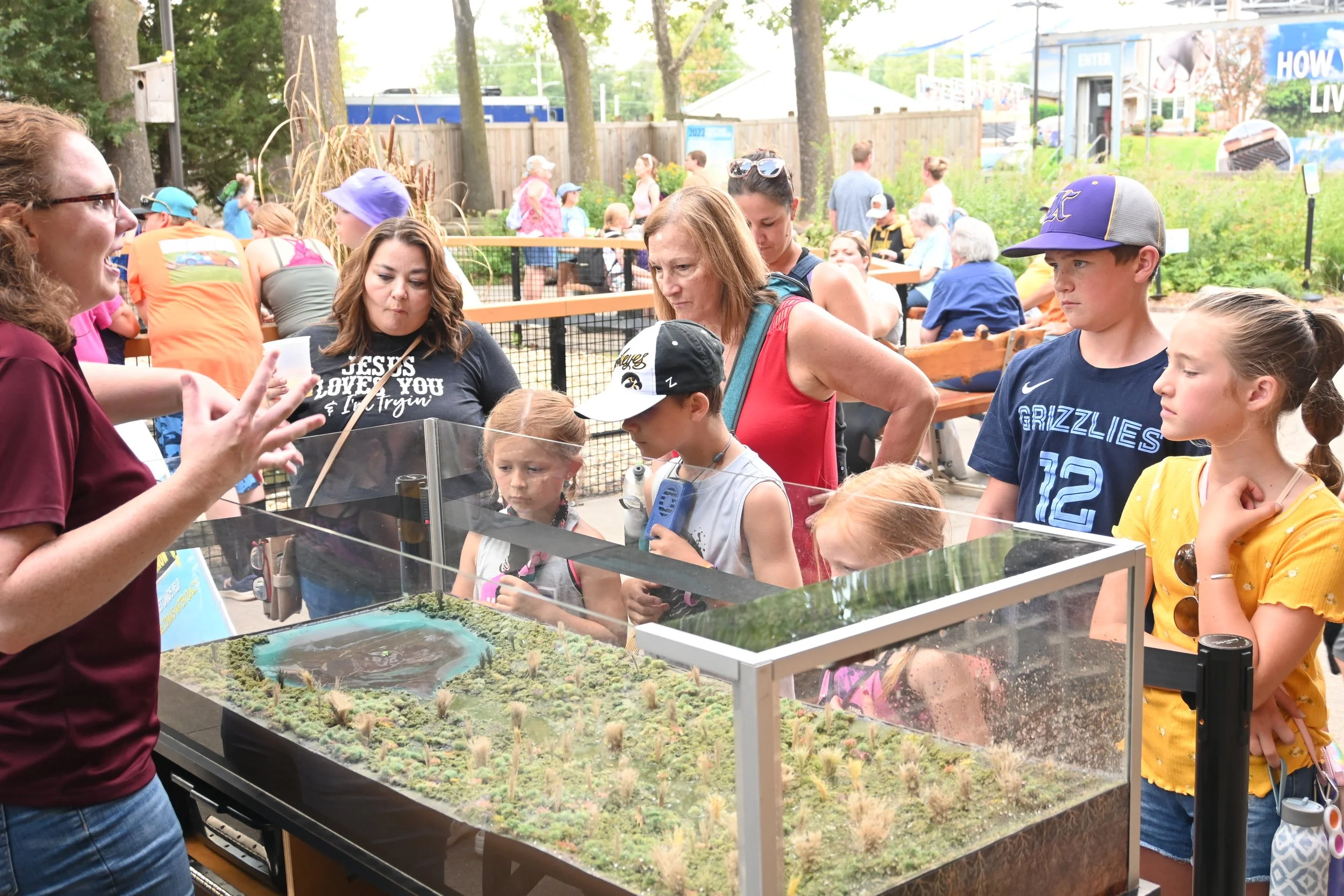Conservation Station
Iowa Learning Farms partners with Water Rocks! to bring audiences the Conservation Station—a fleet of mobile learning centers that educate audiences of all ages on different conservation aspects. Each trailer houses a unique combination of highly visual and interactive Iowa-centric demonstrations that delve into the impacts of land management choices, both urban and agricultural, on water quality and the connections between our state’s water, soil, and wildlife. Visiting fairs, festivals, farmers markets, and other public events, the Conservation Station trailer provides a range of demonstrations, games, learning opportunities and hands-on activities for all ages.
Scheduling/Availability
The Conservation Station fleet’s 2025 schedule is full.
Interested in requesting the Conservation Station for 2026?
Requests will be accepted starting in March 2026—stay tuned here for further details!
Space Requirements
Please provide a flat open space of at least 35’ x 60’, and a clear driving path in and out.
How to Request
Our online request system for the 2026 season will open in March 2026—stay tuned here for further details!
NOTE: The online request system is managed through the Water Rocks! program.
Cost
Conservation Station trailer outreach events are available free of charge. Many thanks to our partners for making this possible!
I have other questions about the Conservation Station trailers. Who can I talk to?
Liz Ripley
ejuchems@iastate.edu
515.294.5429











